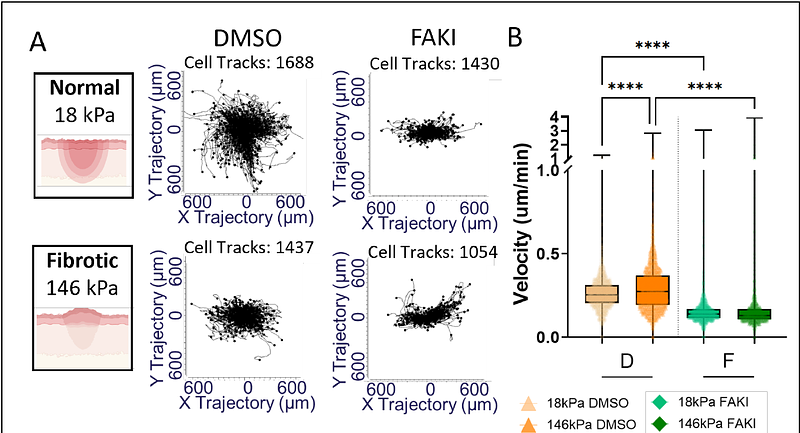FAK Differentially Mechanoregulates Cell Migration During Wound Closure

FAK Differentially Mechanoregulates Cell Migration During Wound Closure
Patten, J.; Albeltagy, N.; Bonadio, J. D.; Ortez, A.; Wang, K.
AbstractCell migration is an essential step in wound healing. Mechanical input from the local microenvironment controls much of cell velocity and directionality during migration, which is translated into biochemical cues by focal adhesion kinase (FAK) inside the cell. FAK induces both regeneration and fibrosis. The mechanisms by which FAK decide wound fate (regenerative or fibrotic repair) in soft, normal wounds or stiff, fibrotic wounds remains unclear. Here we show that FAK differentially mechanoregulates wound behavior on soft substrates mimicking normal wounds and stiff substrates mimicking fibrotic wounds by converting mechanical substrate stimuli into variable cell velocity, directionality, and angle during wound healing. Cells on soft substrates migrate slower and less persistently; cells on stiff substrates migrate faster and more persistently with the same angle as the cells on normal wound substrates. Inhibition of FAK results in substantially slower, less persistent, and less correctly angled cell migration, which leads to slowed wound closure. Moreover, FAK inhibition impairs fibroblast ability to respond to substrate stiffness when migrating. Here we show FAK is an essential mechanoregulator of wound migration in fibroblast wound closure and is responsible for controlling cell migration dynamics in response to substrate stiffnesses mimicking normal or fibrotic wounds.